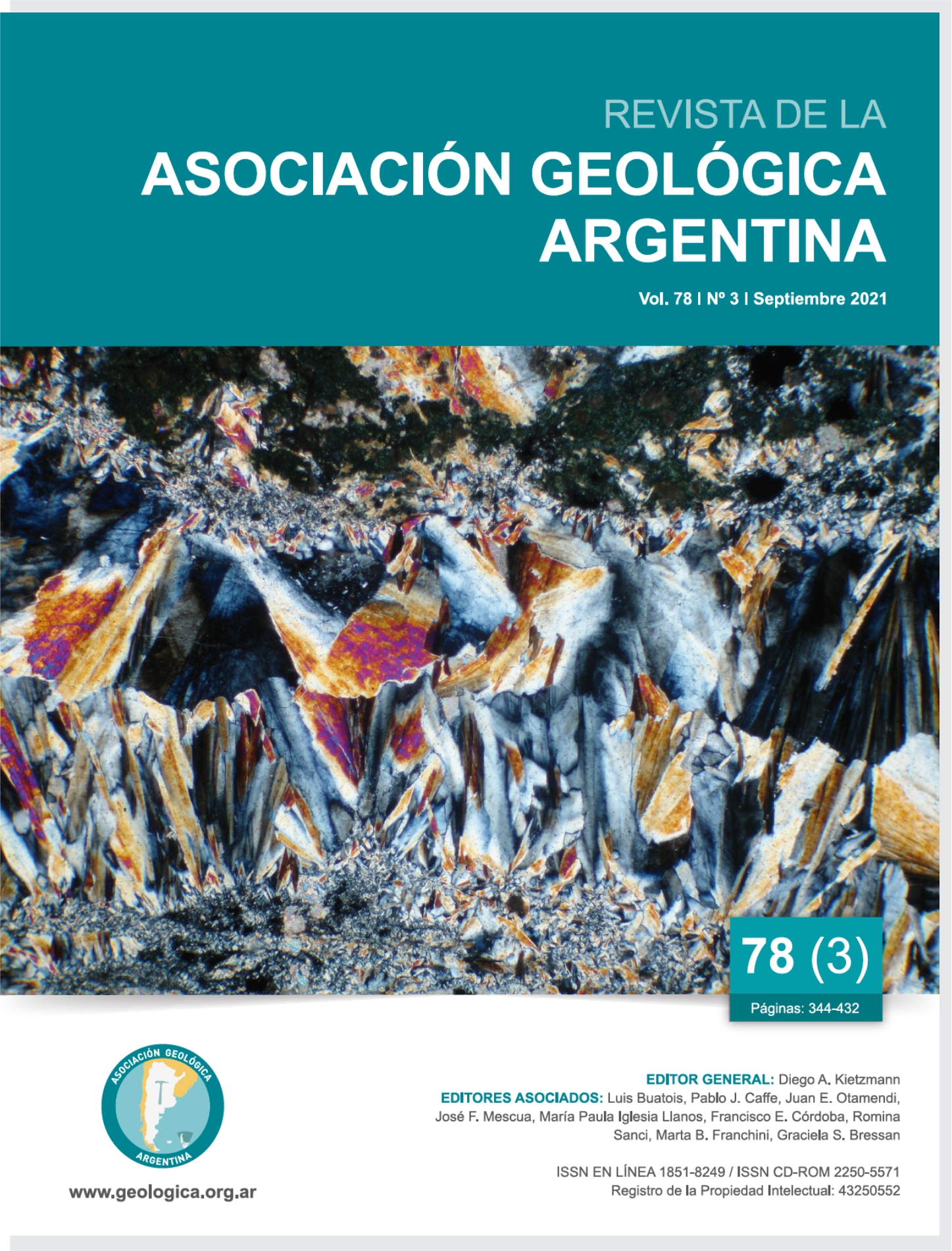Phosphates from the La Argentina and La Rosario veins (Mina Capillitas), Catamarca
Main Article Content
Abstract
Mina Capillitas (Catamarca, Argentina) is a high to intermediate sulfidation epithermal deposit (Cu - Zn - Pb ± As - Sb - Au - Ag). Phosphates are scarce at the deposit. Studies with SEM-BSE and electron microprobe (WDS mode) confirmed the presence of aluminum phosphate-sulphates (APS), pyromorphite and fluorapatite. APS occurs as rhombohedral (pseudocubic) crystals with strong compositional zoning, showing substitution between Sr and Ca, and S and P. They are part of a solid solution dominated by svanbergite SrAl3(SO4)(PO4) (OH)6 and crandallite CaAl3(PO4)(PO3OH)(OH)6. Crystal cores are enriched in P and Ca; their concentrations decrease rimwards, associated to an increase in Sr and S. APS are associated to hübnerite, tennantite-(Zn), pyrite, chalcopyrite, enargite, galena, sphalerite and roquesite. Pyromorphite Pb5(PO4)3Cl occurs as long prismatic crystals showing steep bipyramids, or filling microscopic veinlets. Its occurrence within algal mats hanging from the gallery roofs at the Santa Rita Mine is remarkable. Pyromorphite shows partial substitution of Pb by Ca (up to 3.32 wt.% CaO) and minor amounts of Mn, Fe and Zn. Elements in tetrahedral coordination other than P are present in negligible amounts. Fluorapatite is magmatic and is an accessory in the granite that hosts the mineralized veins. It forms subhedral to anhedral crystals that are F-rich (~3.5 wt.%). Textural relations and mineralogical associations suggest a hypogenic origin for the APS minerals, related to an early stage of the high sulfidation mineralization. Pyromorphite has a supergenic origin, probably enhanced by microbial activity in some occurrences.
Article Details

This work is licensed under a Creative Commons Attribution-NonCommercial 4.0 International License.
Nota de copyright
Los autores conservan los derechos de autor y garantizan a la revista el derecho de ser la primera publicación del trabajo licenciado según una licencia de atribución Creative Commons que permite a otros compartir el trabajo con el reconocimiento de la autoría y de la publicación en la que se publicó por primera vez.
Declaración de privacidad
Los nombres y direcciones de correo electrónico introducidos en esta revista se usarán exclusivamente para los fines declarados por esta revista y no estarán disponibles para ningún otro propósito u otra persona.

